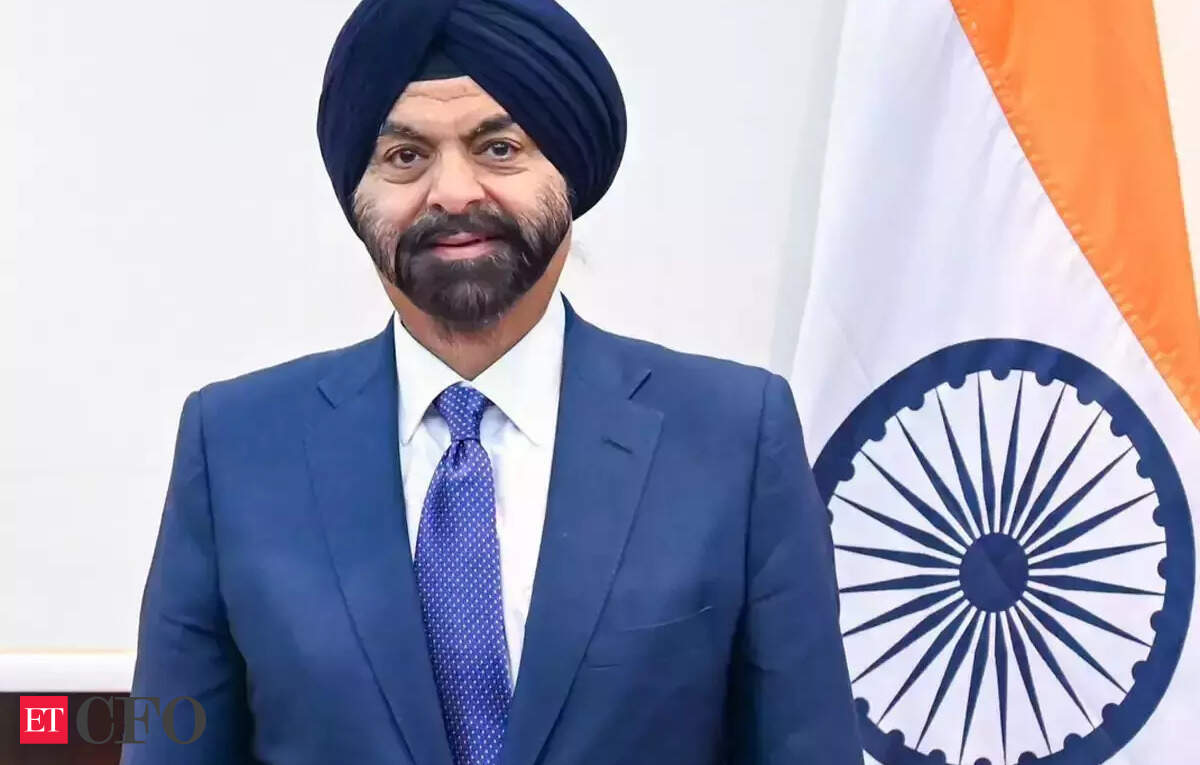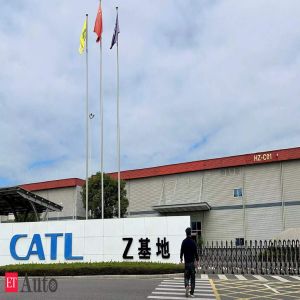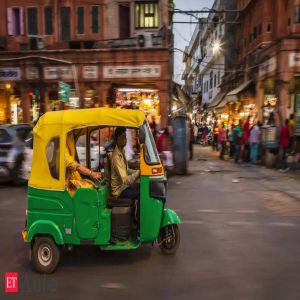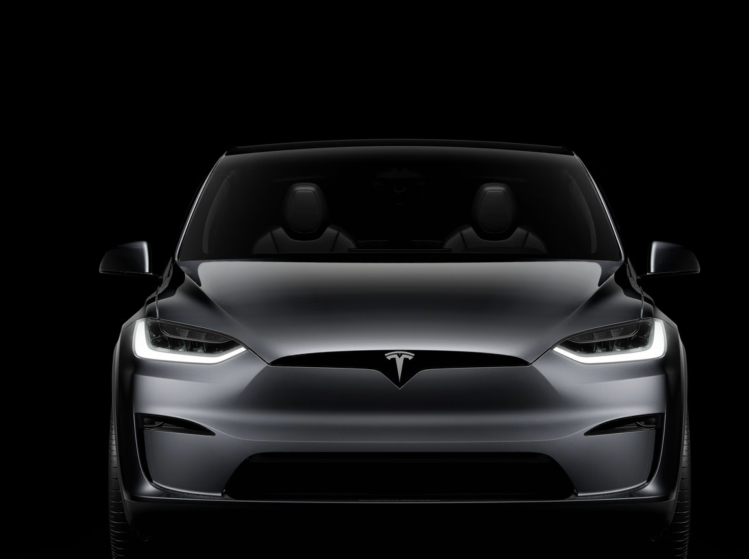“India has five years to take advantage of the changes in the supply chain that are happening because of China+1.”
The global churn due to tariffs is a chance for the developing world to look at its own barriers and think about how to change them so they benefit from an evolving trading environment, World Bank Group president Ajay Banga told Vinay Pandey in an interview. Edited excerpts:
How do you see the world economy, given the context of tariffs and geopolitical turmoil?In fact, the global economy is still doing pretty well. The real problem is that the conversations around geopolitics and tariffs have created a degree of uncertainty and volatility in the markets. The stock market bounced around, although now it is doing pretty well. The bond market bounced around, although that has settled down. The dollar has declined a little. So, there is this feeling that if you have uncertainty, will that delay investment decisions, will consumers delay purchasing decisions? If that happens, then yes, you will see a slowdown in the global economy, including in developing countries, and that is not good because growth is important.
What kind of impact can US tariffs have?The US has had the lowest trade tariff barriers forever. Even with a 10% base, it will still be one of the lowest. The developing world tends to have much more tariff and non-tariff barriers, and there are economically proven facts that lower barriers improve trade and growth. So, this is a chance for the developing world to look at its own barriers and think about how to change those so they can benefit from a changed trading environment. And I think India is very well placed to do things that could benefit it.
Also, if you look at the way global trade has grown over the last 20 years, it has doubled in nominal terms and if you look at the share of that trade that comes from developing countries, that has also doubled from 20 to 40%. And within that 40%, if you look at the share coming from trading among themselves in the developing countries, that has also doubled to half. But the problem is inside that half, you have regions like South Asia and Africa and Latin America and Caribbean where the share is much lower--low double digits, high single digits kind of number. Whereas East Asia, Pacific and Europe and Central Asia are much higher.
I think there is an opportunity for India also to look at intra-regional trade. India has signed a deal with the UK, maybe you will do one with the EU. Maybe you will do some more with your neighbours, and I think that could be very helpful. I think the last piece is that in this entire system, if you focus on the opportunities for India and its environment, you have one big plus, which is that your economy is much more dependent on domestic consumption than it is on trading. So, if the world export system does take some uncertainty for a little while, India will be impacted less than other countries. India, if anything, is in a better way through this coming period.
How do you see this playing out in terms of various countries' positioning and what does it mean for globalisation?What you mean is the old way, where everything was done through WTO global trade deals. But I would say globalisation is also when you do lots of regional and bilateral deals. If you look at the last 10 years, more than 100 bilateral and regional deals have been signed. CPTPP (Comprehensive and Progressive Agreement for Trans-Pacific Partnership), RECP (Regional Comprehensive Economic Partnership), all this happened in the last 10 years. So, what is going on is a change in the pattern of trade, not globalisation going away. It is a different kind of globalisation. It is more regional and bilateral deals. But the bilateral deals are not just with your neighbours. The bilateral deals are with people two continents away. So, it is still globalisation, just done differently. Second is supply chain, and I have said this in your paper actually, some years ago. India has five years to take advantage of the changes in the supply chain that are happening because of China+1.
I don't think you have 10-15 years to fix it. So, you have to think about a few things that will help you get the full benefit of the supply chains. One is the logistics cost. India still has a relatively high cost of logistics compared to the East Asian economies. You are doing a lot of things there. Ports, bridges, and reducing the friction in trade. But there is more work to be done. Second, I think a zero-for-zero kind of tariff might be very helpful. Because in a global supply chain, nobody wants to deal with tariffs coming in, getting VAT (value-added tax) back, that is too much work. I think India has manpower, but skilling needs to be focused on. So, if you ask me, is there a big opportunity? Yes, but work on logistics. Work on continuing regulatory reform, and work on skilling. And I think there is a real chance there.
There was a G20 expert group that was set up by India with NK Singh and Larry Summers. You have talked about making the World Bank bigger and better. Where are we on the recommendations?There are 29 recommendations, 16 are done and the others are all on the way. I will give you a few examples. One of the recommendations was--can we get things done faster? It used to take us 19 months to get a project from conversation to approval at the board. We are now down to 14 months. I set an arbitrary target of 12 by the end of June. I think we will get pretty close to it, but some projects are being approved in 30 days like a health care clinic but some things take three years like a hydroelectric dam. They are more complicated, and they should take longer.
One was can you raise more capital from squeezing your balance sheet more? We raised almost $100 billion from loan to equity ratios, hybrid capital portfolio guarantees.
The third recommendation was, can you work better with the other MDBs (multilateral development banks), other multinational banks? So, we have agreements going with a number of them. We have launched a digital platform where all the banks are now putting the projects they are financing into our platform--175 projects have come in and already 10 have been co-financed totalling $14 billion.
In the case of the private sector lab, what is the second phase going to do?The private sector lab is deeply connected to the jobs council now--you know, those five sectors we are trying to work in. The private sector lab had five work streams and the first work stream is the question of why is it that trillions of dollars are not flowing into the emerging markets, given the obvious opportunity for investing?
We found five things. One, they don't have enough regulatory policy clarity. Second, I they need political risk insurance because governments change their minds. We have put all our insurances together under one part of the bank called MIGA (Multilateral Investment Guarantee Agency)--and now we are simplifying them and making it easier to access. The insurance business is up 30% and we think we can double it in the next two-three years. Third was, will you (World Bank) take junior equity positions. That can make it more sure for investors to follow. So, we have set up the Frontier Opportunities Fund with $100 billion of our own retained earnings. The plan is to keep adding money, maybe go to some philanthropies and raise money from them.
The fourth item was foreign exchange. The best way to build local currency lending is local capital markets. India today has a pretty good local capital market big width and depth, so India has less of a problem today but it took years to get here and in other countries it takes years. What do you do in the meantime? So we are working on a number of countries for capital markets but in the meantime we are doing swaps with local commercial banks and taking their excess liquidity every night and giving them more than they would get from the central bank and then using that to lend in local currency and then we hedge the currency so we do a rolling hedge we take some of that risk onto us rather than the project guy.
So, today IFC (International Finance Corp.) is (about) 40% of our lending in local currency, and a few years ago that was (about) 20%, but it won't get to 80% this way. You need to find more things to do.
The last item is the idea of creating an asset class. If you go back to the logic of getting trillions in pension funds… you go to a pension fund and you ask them, would you like exposure to water and projects in India, they will say yeah, it's a great project, it makes sense. But it I go with one project in this state and another elsewhere--different legal agreements, different covenants–it will not work.
You have to incentivise the government to agree to standardisation with pricing and liquidity and then you can package them with a rating agency sticker. We've asked Doug Peterson who used to run Standard and Poor's, he's doing this for us, so progress on all five, that's what's going on.
What are your plans for India?
We have a new country partnership framework for India that's going to get drawn up. It's going to focus on what I believe is the right thing for India at this stage--private sector-led growth, fiscal prudence in the government, domestic resource mobilisation, hence the digitisation. But private sector-led growth, you'll see us focusing even more on IFC and MIGA.
Already, IFC is now, along with mobilisation this year… we'll be close to $5 billion in India. Just two years ago when I joined it was $1.5 billion, so you can see the dramatic change and 30% of that is equity, which means you get really good-priced capital to leverage catalyst capital.
Then the second thing India needs is knowledge, global knowledge so they can apply it and learn it and use it and then teach us, so we can take it elsewhere. The third thing it needs is some public funding, but I think that's very different from five years ago when public funding would have been the most important. I think now India is at a different stage of trajectory--more private, some knowledge, little bit of public funding, mostly as guarantees and the like to bring the cost down, so that's where we are going.
Second, we are focusing on a few areas--rural prosperity, agribusiness and healthcare, and all that urban development, creative, innovative, good quality of life in cities from municipal financing to quality of air, that kind of thing. Third is skilling and skilling institutes, an important focus area. Fourth, what can we do to help SMEs and entrepreneurs to grow and develop. Our country partnership framework will be private sector-led with some knowledge, a little bit of public financing, it will be rural prosperity, urban development skilling, MSMEs and growth, all oriented towards jobs, jobs and jobs.
What is your view of the Indus Water Treaty where the World Bank is involved? Both India and Pakistan signed a treaty 60 years ago, with the World Bank being a third signatory. That treaty is very clear--our role after the treaty was signed is very defined. We have no role to play in arbitration directly. Our role was to create a commission--that we created--clearly that is currently in abeyance. The Commission and the dispute process is paid for by a trust fund that was set up at the time with us. If India or Pakistan has a dispute, they approach each other and us - we have to create a neutral expert or a court of arbitration. There is a whole process for doing that, and then the trust fund pays for that. We are not a member of the court, we don't have a role in opining what is right and what is wrong.
You mentioned jobs is becoming a focus of what the World Bank is doing. Will it require substantial retuning?Oh, sure it takes re-tuning. The World Bank's job was to eradicate poverty, which is the basic job. The best way to eradicate poverty is to give somebody a job because a job gives you money, but also changes your optimism and your feeling of future happiness. That hasn’t changed.
It isn’t just a question of building a bridge or a school or a road and thinking that all that done correctly will lead to a job. You have to be a little more thoughtful about it.
We have set up a job council run by President Tharman of Singapore and President Bachelet of Chile, and a number of CEOs and economists and NGOs including some from India.
One of the things we're working on is this: What are the three things required for jobs to work? Jobs are created in the private sector. Many are in small enterprises that create jobs because they receive orders from larger companies. But what does it take for that to happen?First, you need infrastructure—bridges, roads, airports, schools, healthcare, electricity, education, skilling, and digitization across most of these. In the last 10 to 15 years, India has done an outstanding job with roads, airports, electrification, skilling, and digitization. No one’s better than India. That’s infrastructure.
Second is regulatory policy. If you create the right enabling environment, the private sector can build jobs. India has made a lot of progress here too, but there’s more to do on labor reform, land reform, tariffs, and non-tariff barriers—and none of these are easy.
Third, once you have that, you enable the private sector to grow—with early capital, catalyst capital, risk capital, insurance, and all that.
We need millions of jobs, not thousands—so we have to think differently. The global trade model was built on outsourcing OECD jobs to developing countries, but that model clearly won’t continue.
With the Jobs Council, we’ve identified five areas that don’t rely on outsourcing. First is infrastructure—both construction and what it enables. Second is agriculture as a business. Third is primary healthcare, employing nurses, diagnostic technicians, midwives, and PPE manufacturing—not just in big towns, but distributed more widely. Fourth is tourism and its economic power. And fifth is manufacturing for local consumption—through regional and bilateral deals, value addition, and local job creation. So, it’s not just manufacturing in the traditional sense.
I’m trying to get people to see that there are all these other large opportunities for job creation. Now, they’re paid differently—so not all jobs are created equal. But you don’t just need equal jobs; you need jobs for everybody.





Comments (0)